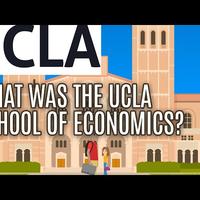Essential UCLA School of Economics: What was the UCLA School of Economics?
Welcome to the essential ideas of the UCLA School of Economics.
The economics department of the University of California, Los Angeles,
better known simply as UCLA, gained prominence during the last few decades of the 20th century.
Its focus on the role of institutions, including property rights, regulations,
the legal system, and social norms, and how they guided and influenced the economy, distinguished
it from most other economics programs. The approach of the UCLA School eventually became
known as New Institutional Economics and remains a prominent force in economics to this day.
The seeds of UCLA's success occurred in 1946 when Stanford-trained economist Armen
Alchian joined the department. Contrary to the general trend in economics at
the time that favoured increasing government intervention in the economy, Alchian's work
showed how entrepreneurs and businesses seeking profits, combined with welldefined
property rights, were the most effective way to align the interests of consumers and producers.
Alchian also introduced a different method of teaching relying less on mathematics and
more on intuition. Indeed, UCLA became known for using words,
rather than mathematical equations, to describe and analyze economics.
Northwestern University-trained economist Harold Demsetz joined UCLA permanently in 1971.
Demsetz extended the work already being done on the effect of regulations on
the economy, particularly those concerning large business and businesses that wanted
to merge or purchase other businesses. The combination of Demsetz and Alchian
created a formidable foundation for UCLA's economics program,
and the two published a number of seminal academic studies,
including two in the prestigious American Economics Review.
Both were often noted as being worthy of consideration for the Nobel prize in economics.
The school's unique approach to economics started to attract other economists of note,
including Sam Peltzman, Benjamin Klein, Jack Hirshleifer, and
George Hilton. And to this day, the UCLA School's
tradition carries on in the work of hundreds of economists who studied there during its prime.
For more information on the UCLA economics visit EssentialUCLAeconomics.org,
and to learn about more essential scholars, visitEssentialScholars.org

